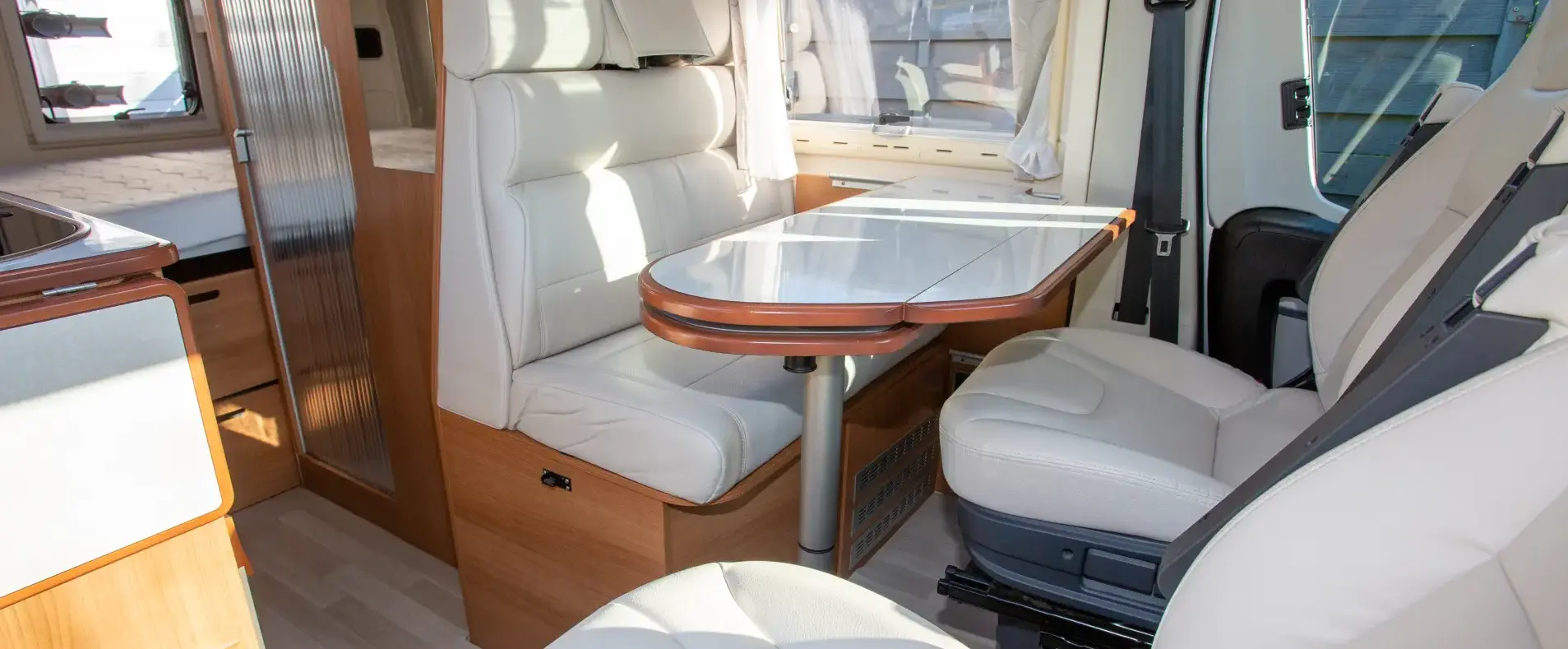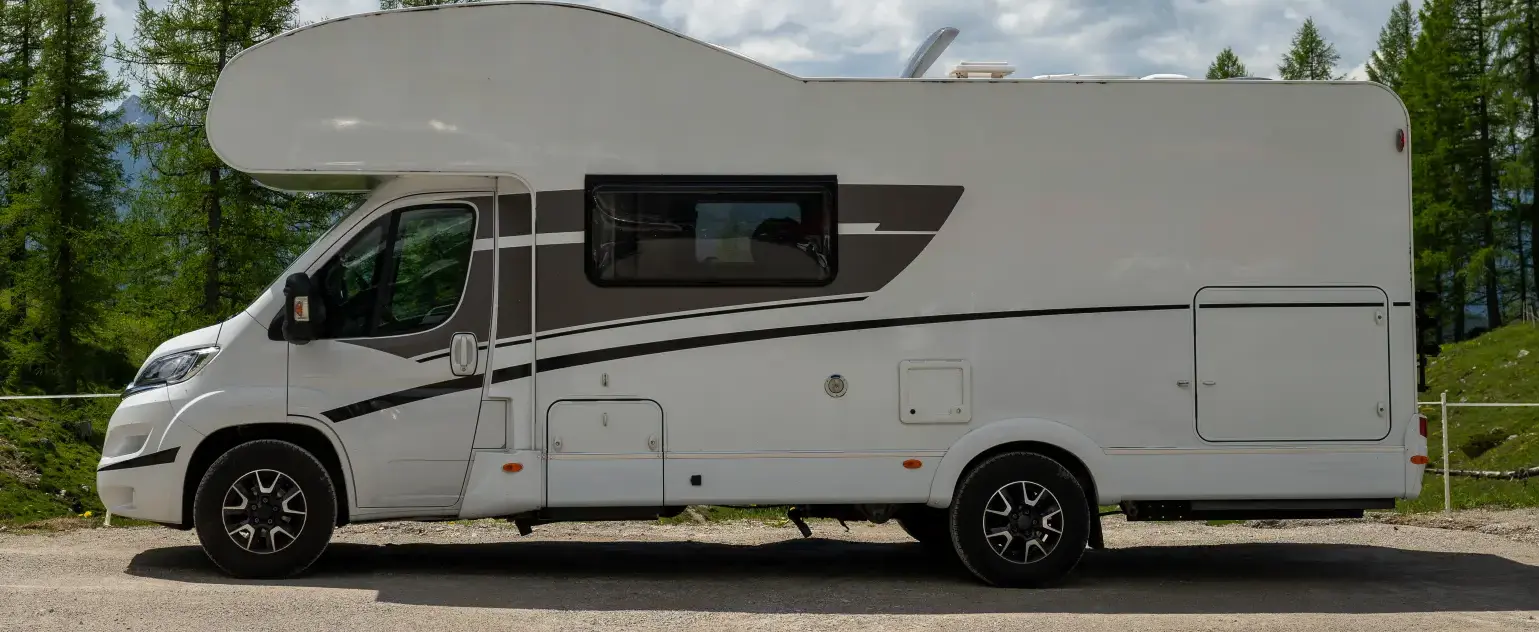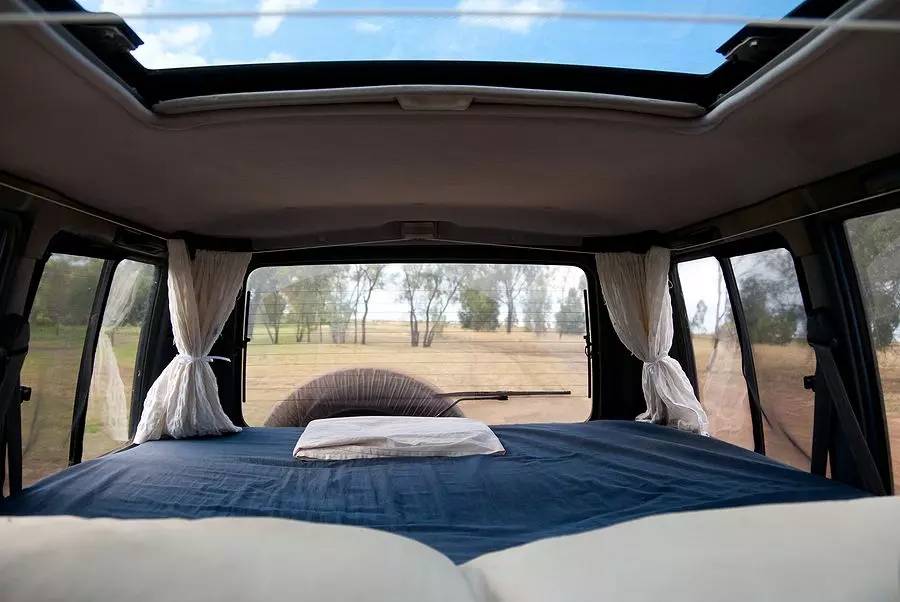Poor Layout and Space Planning
One of the biggest mistakes in a campervan conversion is failing to plan the layout properly. Space inside a van is limited, so every decision matters. A poorly thought-out design can make the van feel cramped, uncomfortable, and difficult to use, even if the build quality is good.
A key issue is trying to fit in too much. It can be tempting to add every feature you have seen online, but overcrowding the space will quickly make it less practical. For example, a large kitchen or bathroom may leave little room for seating or storage. A better approach is to focus on the features you truly need and design around them.
Another mistake is not thinking about how you will move around inside the van. If cupboards block walkways or your bed takes up too much space, daily life will become frustrating. Placing the kitchen near a door for ventilation, keeping storage areas easily accessible, and leaving enough room to sit or stand comfortably are all small choices that make a big difference. It is also important to plan for flexibility. A fixed bed may be comfortable, but in a smaller van, fold-out options or convertible seating could provide more space during the day. Sketching out different layouts or using simple 3D planning tools can help you visualise how the van will feel before you start building.
Overlooking Insulation and Ventilation
Another common issue for campervan conversions is those who fail to plan properly for insulation and ventilation. These features are usually treated as extras, but they are necessary for comfort, safety, and the long-term quality of your van. Without them, you may face problems such as damp, mould, and extreme temperatures that make the van unpleasant to live in. Insulation helps to control the temperature inside your van. In colder weather, it keeps warmth in, and in hotter months, it reduces the build-up of heat. Skipping insulation, or doing it poorly, can make sleeping in the van uncomfortable and increase the risk of condensation. Using proper insulating materials, such as foam boards or sheep’s wool, is a worthwhile investment that will pay off in comfort.
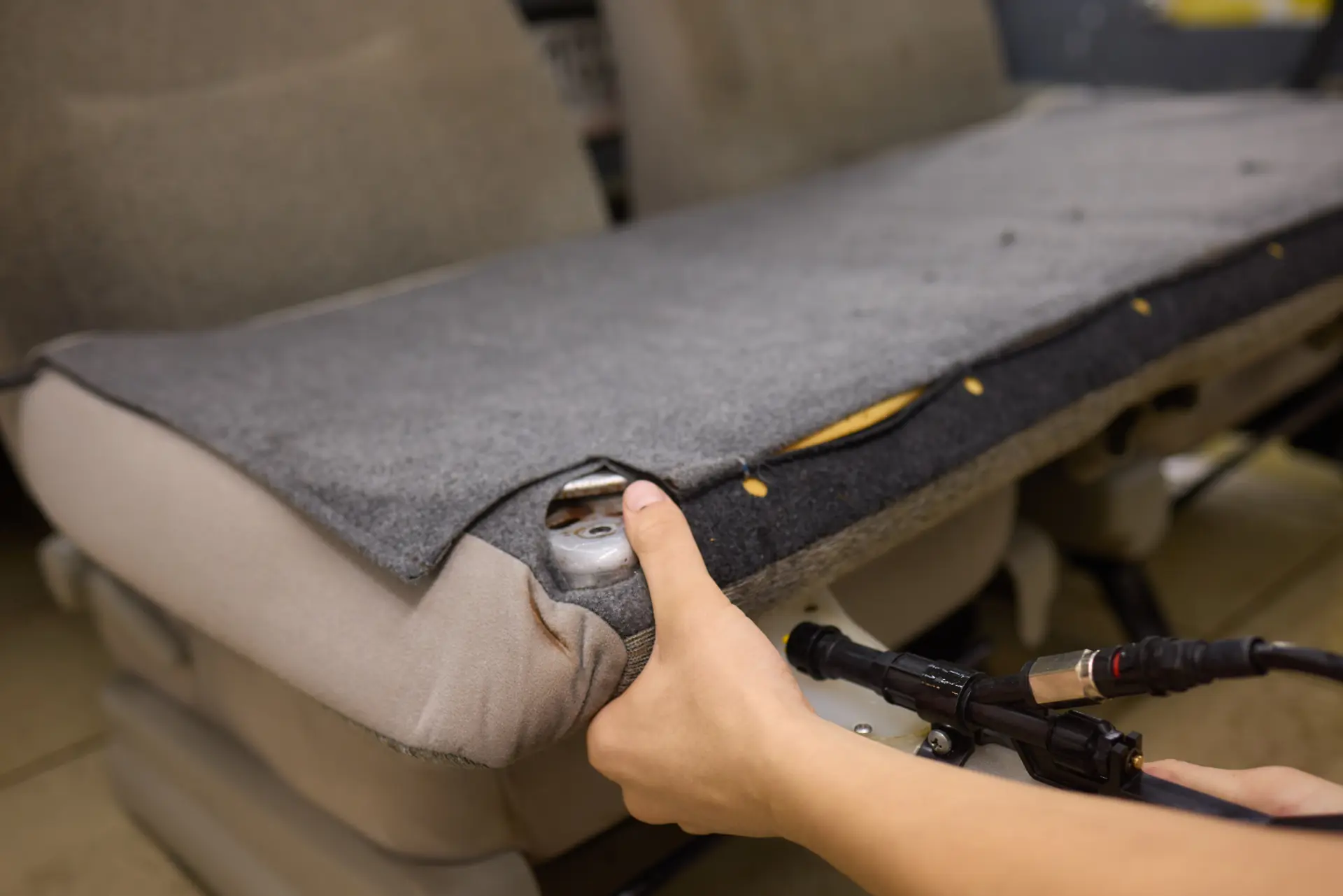
Ventilation is just as important for your motorhome. Cooking, breathing, and even sleeping are all practices that produce moisture, and this moisture can quickly build up inside a closed space. Without having some good airflow in your vehicle, condensation will begin to form on your windows and walls, leading to damp and damage over time. Roof vents, opening windows, and small fans can make a huge difference, keeping the air fresh and reducing the risk of mould.
It is also worth noting that ventilation improves safety. If you plan to cook inside your van, proper airflow will help remove smoke and reduce the risk of harmful gases. A carbon monoxide alarm should always be included for extra protection.
Be sure to take insulation and ventilation seriously from the start, as this will help you create a van that is more comfortable, healthier, and longer-lasting. Overlooking these essentials may save time in the short term, but it can cause costly problems in the future.
Ignoring Electrical and Plumbing Needs
A mistake that many first-time converters make is leaving electrical and plumbing systems as an afterthought. These are not the most exciting parts of a campervan build, but they are some of the most important. Poor planning in such areas can lead to unsafe setups, costly repairs, and a van that is difficult to live in.
Electrical systems should be designed before you start fitting furniture or walls. Think about what you will need to power, such as lights, a fridge, charging points, or heating. From there, decide how you will supply the power. Some people rely on leisure batteries and solar panels, while others use campsite hook-ups. Whichever option you choose, make sure the wiring is safe and easy to access for maintenance. If you are not confident with electrics, it is best to hire a qualified professional. Safety must always come first.
Plumbing is another area that requires early planning. Even a simple setup with a sink and a freshwater container needs space and careful positioning. If you want a fixed water system with a pump, or even a shower and toilet, you will need to allow room for pipes, tanks, and drainage. Fitting these after the rest of the build can be messy and may mean undoing finished work.
Both electrical and plumbing systems also need to meet safety standards. Gas appliances, for example, should always be installed and tested by a certified fitter. Water tanks and pipes should be cleaned and maintained regularly to avoid health risks.
Using Low-Quality Materials
Cutting corners by using lower-quality materials for your conversion is a mistake that can cause serious problems in a campervan conversion. Whereas it may seem like a way to save money in the short term, poor materials often lead to quicker wear and tear, costly replacements, and a less comfortable living space. One of the biggest risks is with structural elements such as flooring, furniture, and storage. Thin plywood, weak hinges, or cheap fittings may not stand up to the constant movement and vibrations of life on the road. As time passes, they can break or loosen, making your van feel rather unstable and unsafe. Investing in strong, durable materials will make your build last much longer.
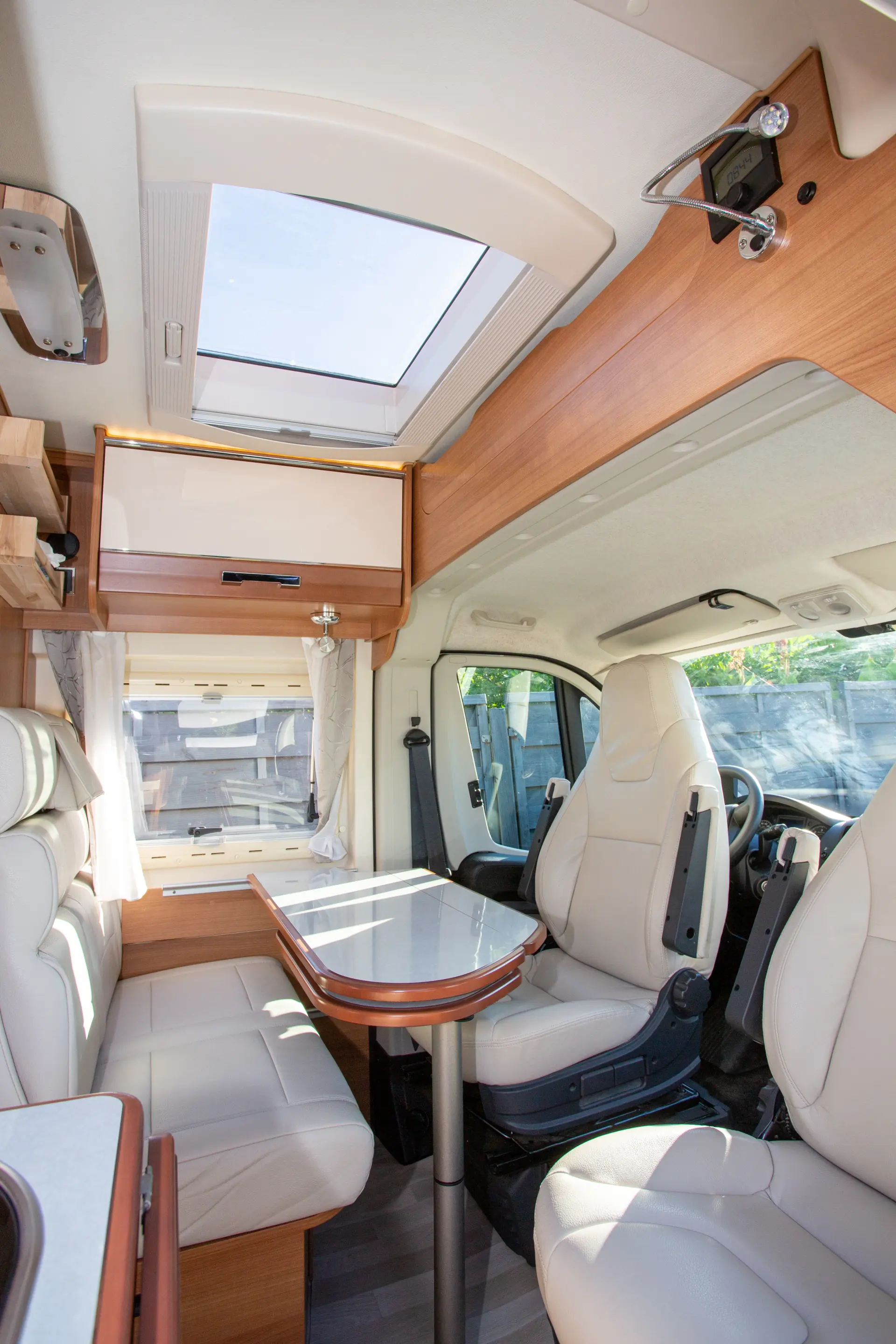
The same applies to insulation, plumbing, and electrical components. Low-quality insulation may not protect against temperature changes, while cheap pipes or fittings can leak. Poor wiring or unreliable electrical parts can even be dangerous. Choosing trusted products and, where possible, professional-grade materials helps to avoid these risks.
Appearance is another factor to consider. Surfaces that mark, peel, or wear quickly can make the van look untidy and spoil the finish of your hard work. Spending a little more on durable flooring, wipe-clean surfaces, and strong fabrics will keep the van looking and feeling fresh for longer.
While it is important to stick to a budget, using low-quality materials often costs more in the long run. A balance can be found by investing in quality for the most important parts, such as the bed, kitchen, and electrics, while saving money on smaller items that are easy to replace later.
Skipping Safety and Legal Requirements
While it can always be tempting to solely focus on the fun part, which is often design and comfort, ignoring the rules puts you and others at risk. It can also prevent your van from being used legally on the road. Gas, electricity, and plumbing all need to meet clear safety standards. Fitting these systems without the right knowledge can lead to dangerous problems such as leaks, fires, or carbon monoxide poisoning. Gas appliances, in particular, should always be installed and tested by a certified professional. Invest in a carbon monoxide alarm and a fire extinguisher, as these are simple additions that could save lives.
Another key requirement is insurance and vehicle classification. In the UK, for example, you may need to re-register your campervan with the DVLA if the changes are significant. Failing to do so could affect your insurance or even make the van illegal to drive. Always check with your insurer before starting work to understand what they need for cover.
Weight limits are often overlooked, too. Every van has a maximum load it can carry, and going over this can make the vehicle unsafe and may result in fines or failed MOTs. Weigh your van once the conversion is complete to make sure you are within the legal limit. Road safety should also be a priority. Seatbelts must be properly fitted for every passenger seat, and any modifications to the bodywork or structure of the van must be secure. Cutting corners here may put lives at risk.
At Autobarn Camper Conversions, our passion lies in crafting bespoke campervan conversions, uniquely tailored to align with your lifestyle needs and preferences. Our dedicated and knowledgeable team are there to lend their expertise at every step of the conversion journey.
